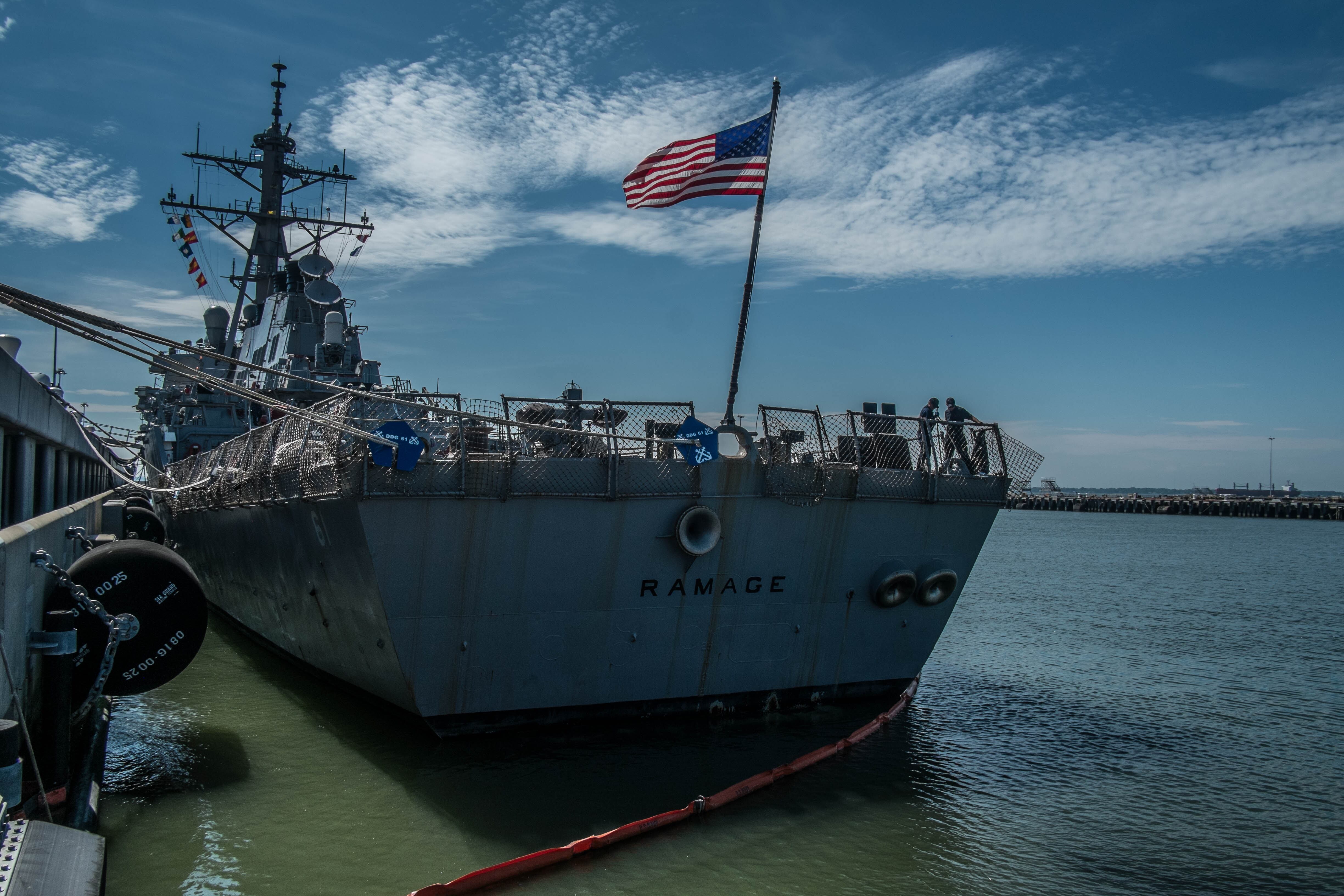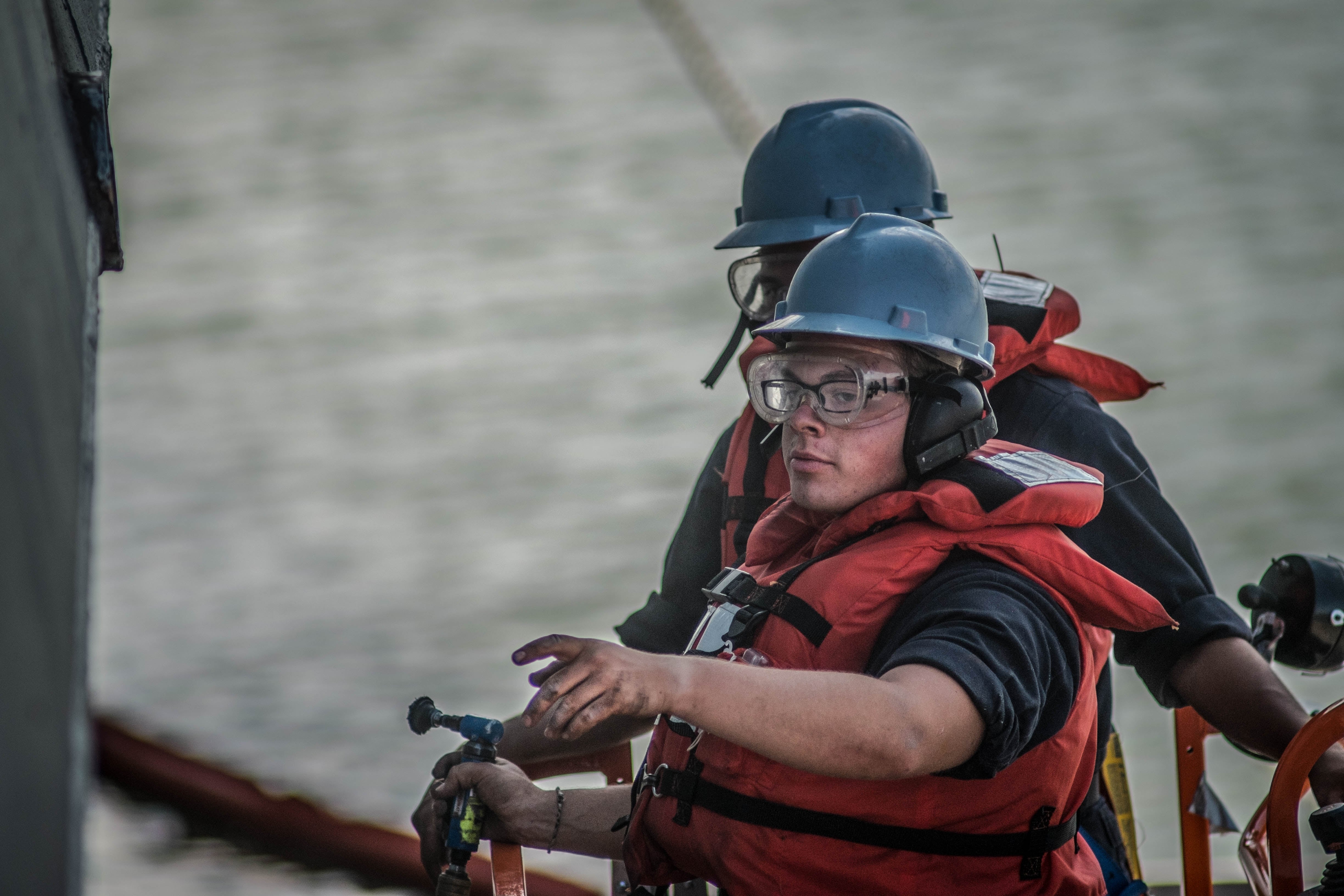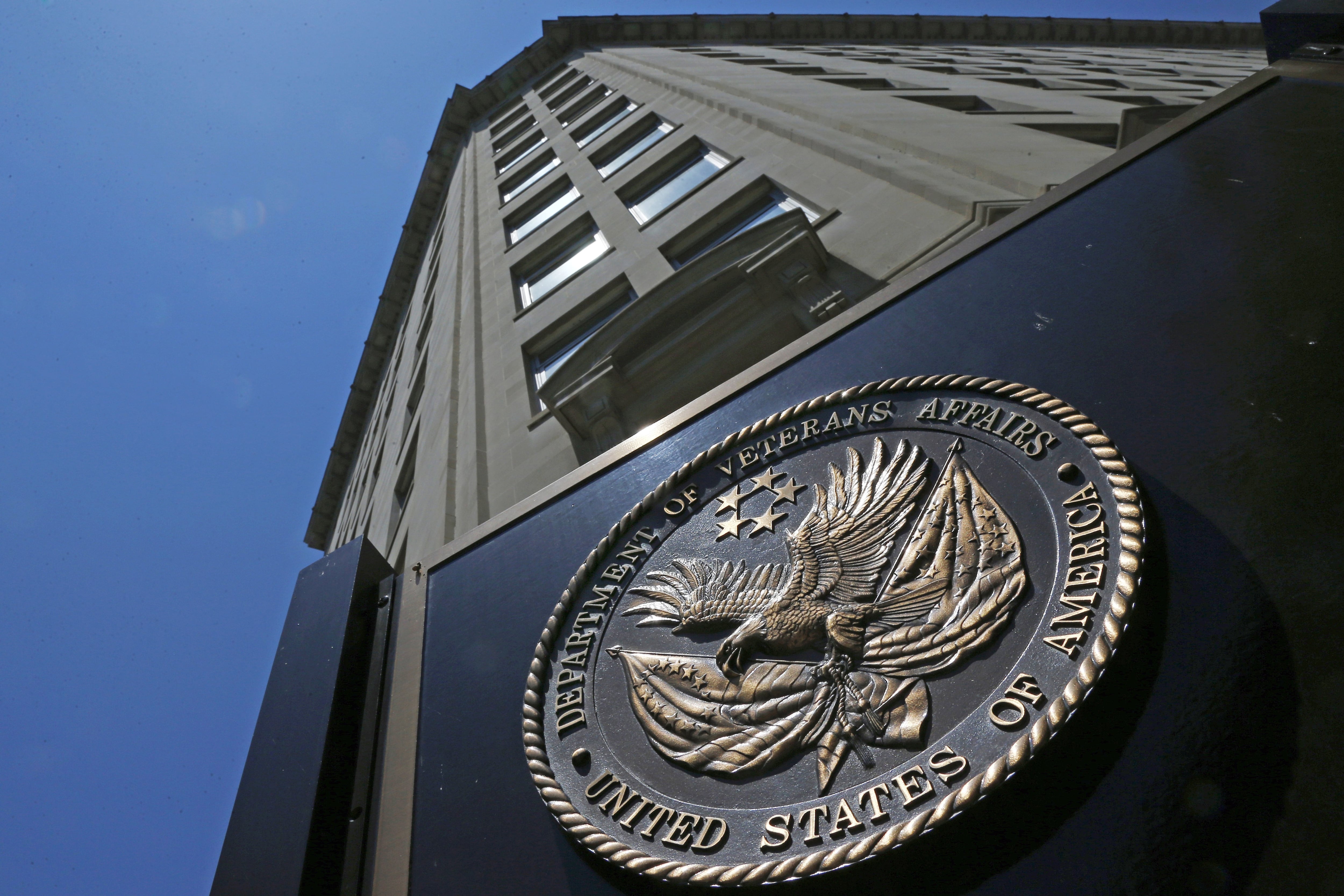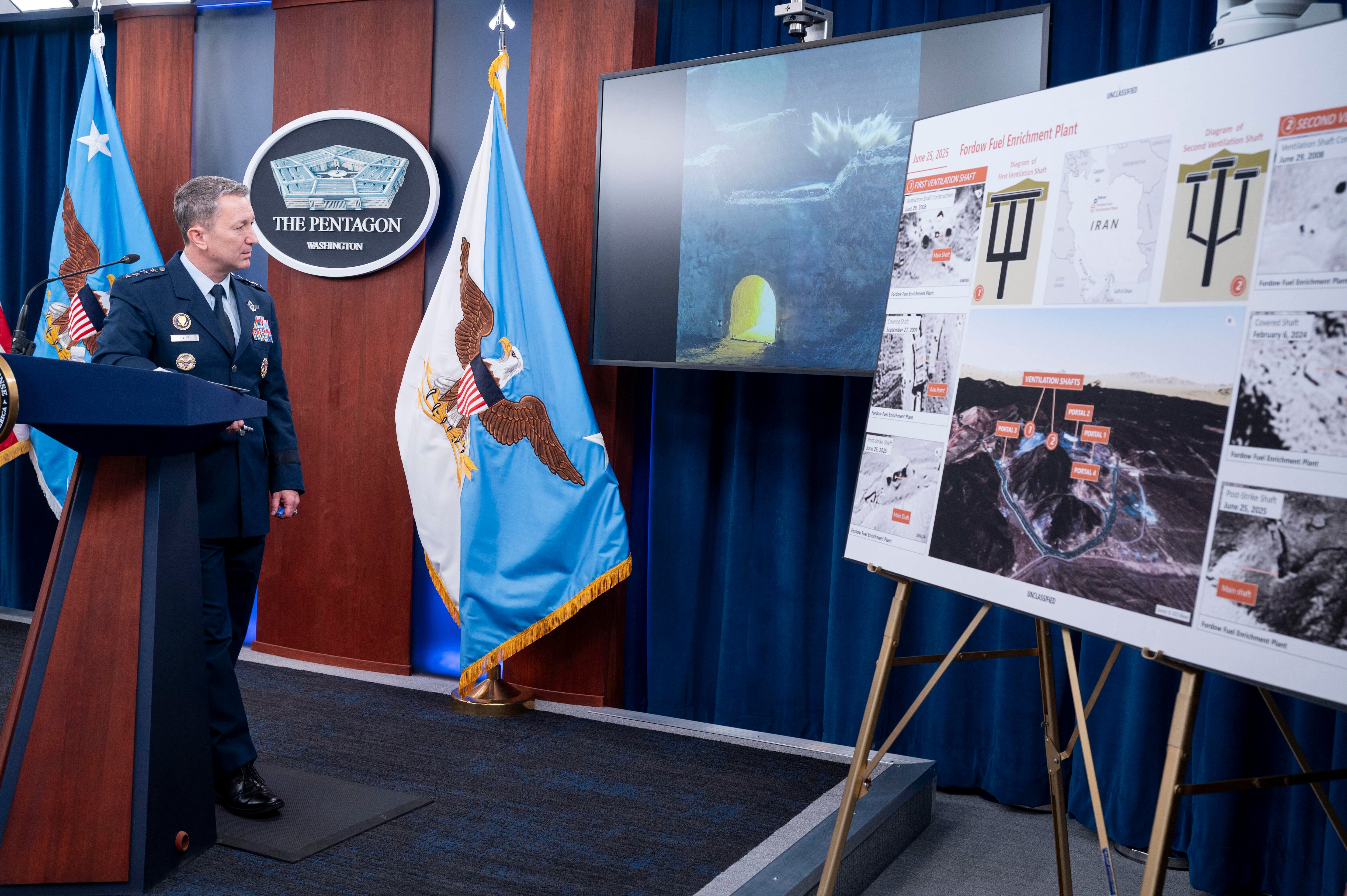ABOARD DESTROYER RAMAGE, NORFOLK NAVAL STATION, Va. — A radical overhaul of the enlisted advancement system begins nownext year, and the biggest beneficiaries will be fleet sailors and the skippers who lead them.
Starting July 1, the Command Advancement Program will go away, replaced by a new Meritorious Advancement Program — MAP — that is fundamentally different in focus and will enlarge the role of no-test promotions, where commands can mint new petty officers or add a chevron on the spot. radically change how sailors see and commands use spot advancements on the deckplates.
And that's only the beginning. Officials are laying out a bold plan that calls for doubling the number of spot advancements, expanding them to shore duty and allowing commands to transfer quotas so the most deserving sailors get picked.
"This will really give me many more options for my command," said Cmdr. Joel Lang, this destroyer's commanding officer. "With a command of 300, it's not always a sure thing that we'll have eligible sailors at all levels, so being able to give an E-5 quota or two back into the pool and be able to get an E-6 quota in exchange will be huge for us in managing our program — and ensure all quotas get used."
For years, commands have been wanting more control over sailor's advancements and and has been bending leadership's ear about it.
Navy leadership from Secretary of the Navy Ray Mabus on down want to give CO's more ability to reward top talent and performance on the job by allowing these top sailors to bypass the test if their command leadership believes them ready.
This year, MAP will startthe program's rework with the name change as well as controls and an initial system to account for each of these advancements by track who is advanced and how many quotas are used so other commands can commanders can ask for more advancements, takeing advantage of unused quotas elsewhere at one command and turning them into advancements between their lifelines.
Next year, officials will look to expand the numbers. They plan to boost spot advancement slots from roughly 2,500 a year to 5,000 next year from looking to initially double the percentage of those advanced without the textfrom roughly 2,500 a year to 5,000 2.5 percent of all advancements to 5five percent. That's TK more spots, whichwill includes the expansion to shore duty, a change for which sailors have long clamored. Right now the only non-sea duty spot advancements are for Navy recruiters.
The chief of naval personnel sees the revamp as a way to delegate more advancement authority to those who know sailors best — their commanders.

The commander of the destroyer Ramage says MAP will give him many more options. Here, sailors work on the fantail to clean, repair and prepare the ship for an INSURV inspection.
Photo Credit: Mark D. Faram/Staff
Initially this means that starting next year, 5,000 advancements come without a test and officials will begin to expand the program to some shore commands.
This year's changes were just announced June 18 in NavAdmin 141/15.
Starting July 1, the Command Advancement Program will go away, replaced by a new Meritorious Advancement Program — MAP — that is fundamentally different in focus and will radically change how sailors see and commands use spot advancements on the deckplates.
"MAP is an effort to use an existing authority in policy, which allows CO's to selectively determine — based on performance and skill set requirements — to advance sailors to a paygrade at which they're already operating at," said Vice Adm. Bill Moran said, chief of naval personnel in a June 16 interview with Navy Times.
"It's very much about trying to give as much authority to our triads, our COs, XOs and CMCs, who know their people better than the system does."
New rules
Last year, Moran ordered skippers to limit spot advancements to a three-month window between the the decision was made to limit the annual timeframe when skippers are allowed to make their advancements from year-round to a three-month window situated in the summer and between the spring and fall advancements.This allows advancement quota planners to account for who is advanced as they lay out exam cycle quotas. Moran said that overhaul was a move to save CAP authority, which was widely criticized for worsening the Navy's overmanning crisis. they plan for the next two advancement exam cycle's quotas. Meritorious Advancements will come off the top, those competing on the exam will compete for what's left.
Last year, all spot advancements under the old CAP ceased on October 1, 2014 and any unused quotas from the calendar year 2014 went away, shifting the program to a fiscal year schedule.
The new first Meritorious Advancement Program open season starts July 1 and will close August 31. To lock in their advancements. The final month of the window, September, will allow commands to turn in is being called a "redistribution season" and will run from September 1 through 31, during which commands will turn in unused quotas or request more to advance additional sailors. This means that all a As a result, each command's quotas must be used or accounted for through advancements or given back, along with a letter explaining why they weren't used.an explanation in the letter as to why they weren't used.
To formalize advancements Commands must submit a "MAP certification letter" in which they will list all of their requested advancements, accounting for any returned quotas and, if necessary, request more, according to naval message 141/15 any request for more quotas, too. The message states that Giving back a quota this year won't impact quotas given for next year.
In addition, returning some giving back quotas doesn't hurt the ability to ask for others. impact the ability to ask for more, either. For example, Commands can request to swap quotas, like returning such as returning say two E-4 spotsquotas and requesting one more for an additional E-5 quota.
"This will really give me many more options for my command," said Ramage CO Lang. "With a command of 300, it's not always a sure thing that we'll have eligible sailors at all levels — so being able to give an E-5 quota or two back into the pool and be able to get an E-6 quota in exchange will be huge for us in managing our program — and ensure all quotas get used."
The message is clear, all requests for more quotas must come in the initial letter and all initial letters must reach personnel command by Aug. 31. Second letters accounting for reused quotas must arrive by Sept. 30.
Extra quotas will be issued by the type or echelon two commander, for example, Naval Surface Force Pacific for a ship or Navy Expeditionary Combat Command for a riverine group. Issuing out the extra quotas will be done by that unit's Type II commander. Once approved, commmands will then have to submit another letter to NPC accounting for how the new quota or quotas were used.
Getting new quotas isn't guaranteed, the message cautions. says and officials say It's essentially a first-come, first-served basis. Officials encourage commands to submit their letters as early as possible and commands can even submit their letters today in advance of the July 1 opening.
Also, if a command chooses not to use only of their quotas, they must simply send a letter stating they are giving the quotas back.
Navy officials will make it easy for commands and will post an example letter at http://www.npc.navy.mil/bupers-npc/career/enlistedcareeradmin/Pages/Advancement.aspx.
The message states that e-mail is the preferred method for submitting certification letters to NPC and the address is advancements-active@navy.mil.
You can expect a response within four business days by email, too An e-mail responsevalidating the MCL should be received within four business days of submission.
Who's eligible
To level the playing field between spot promotions and promotions through the twice-a-year testadvancements methods, officials have also aligned the rules so that for meritorious advancements to that of the Navy-wide advancement exam cycles. In short, if sailors can is eligible to compete on the test through the text cycle, they can also be 're also fully qualified to be advanced by their skippers.
COs can waive ability for CO's to waive a year of required time in grade to be eligible for the next paygrade for those with an early promote recommendation on their annual evaluation. This has long been in place for taking the test, but it's new this year under the new MAP.
Once approved, all MAP advancements will be effective July 1, meaning sailors will be paid from that date, which will also be their date of rank going forward towards the next advancement cycle an seniority.
Also, though an expansion to shore duty is in the works, This year spot promotions are it's still limited to sea duty commands. You can check out what commands are eligible at If you know your command's unit identification code you can see if your command is eligible by reviewing the list in NAVADMIN 245/14.
Currently, Pre-commissioning units are not authorized to submit any certification letters until on or after actual their ship's delivery date or in-service date, whichever is sooner, the message said.
Culture change
Officials want to deep-six more than the Command Advancement Program name, but the troublesome culture that often went along with it, where commands advanced the going away, Moran also wants to deep-six the culture that the program fostered where commands have mostly treated it as a niche program, using it to advance those struggling to pass advancement tests or bumping up against high-year tenure.
That's a vestige of the program's origin in the late 1960s, when at's because of the program's roots Moran said, which began in the late 1960's when the Navy was largely a conscript force and many sailors couldn't read or write well. CAP empowered skippers to recognize those gave sea duty CO's the chance recognize those sailors who were disadvantaged by limited education. reading and writing skills allowing them to level the paying field to some extent.
Those days are over, Moran said. You need a With a force today that must have a minimum of a high school diploma or an equivalent to even walk in the door today. Moran So the days of , he says, those days of a charity program are over. Navy leadership says they wants commands to use the new MAP to advance their best performing eligible sailors — through meritorious advancements and not wait for the exam.

The change from command to meritorious advancement will require a culture change across the Navy. Here, BMSN Ethan Giannolla, front, and SR Anthony Mares bust rust on the starboard side of the destroyer Ramage.
Photo Credit: Mark D. Faram/Staff
"That culture has survived in CAP throughout the past decades, but what we're really talking about now is changing the culture to recognized our best talent through meritorious advancement, much as we do with meritorious advancement of the sailors of the year to chief petty officer," he said. "Why not give door more of that type of authority to commanding officers, both at sea and ashore?"
COs are weighing the changes ahead and say they are likely to increase the impact of a valuable program. Aboard the Norfolk-based guided-missile destroyer Ramage, Cmdr. Joel Lang, the ship's commanding officers says the program's change will have a tremendously positive impact on the ship and it's sailors.
"This truly does look like a meritorious advancement now," Lang said in a June 17 interview in his stateroom on the Ramage. "We're always telling them that performance matters, that what you do day to day is important and can impact your future. Now we can show those sailors and their shipmates just how true that is.
"Take that number one E-4 on the ship and make them an E-5 in front of the whole crew, even before they take the test, and everyone knows that sailor is the top performer and what the standard is."
Until now, Command Master Chief (SW/AW) Terry Wylie said spot promotions have typically been conferred only after commands he's been at used CAP only after the dust settled from the regular the advancement process, and that meant those picked were sometimes those who missed the cut rather than those who are the command's top sailors.
"The advancement results came out and then you started talking about who you wanted to CAP — picking sailors to move up from those who were not advanced," he recalled.
Sure, he said, the scrutiny of the command would generally pick CAP sailors from those who ranked well in the command — but didn't measure up in Navy-wide competition for one reason or not — either lack of quotas to move up or poor test taking skills.
"But here's the thing, using a CAP to advance someone who didn't make it on the exam cycle, we were, in essence putting them in front those who made it off the test," he said.
That's because spot promotions take effect immediately and those sailors are paid right away, whereas others sailors is is because, when you get advanced through CAP, it's immediate and you get paid right away, where sailors might get frocked not long after the exam but don't see the pay until weeks or months later., when they get paid is phased in across the fiscal year.
"It's important to me that sailors recognize what this means because now it's a straight up competition based on performance, on who we can advance here, on the spot," Wylie said. "I plan to leverage that fact as much as possible."
Both Wylie and Lang say this shows the rest of the command that they, too, can get that meritorios advancement and bypass the test — buy upping their day to day game a bit.
"It's going to be the best and brightest — the folks who are doing the most for us — and all our sailors will see that now that you can truly earn your way to to that advancement," Wylie said.
Boosted quotas
For this summer, the CAP quotas will remain the same as last year. fiscal year's program, the existing CAP quota plan is in effect, meaning the numbers of advancements you had under last year's CAP is what you have this year and no more.But that will change next year Moran says as the service will starts expand the number of quotas offered in what's expected to be a gradual increase, year over yearto skippers. But officials say they're going to increase gradually — watching the program and how commands are using their quotas or not.
But Moran is clear — he wants more meritorious advancements and the quota expansion will begin next year.
Right now, there are a total of 2,238 CAP quotas available Navy-wide for fiscal year 2015. But in past years, many of these weren't used. not all of them get used, In fiscal 2014, COs only advanced about 1,600 sailors, down from about 1,700 the year before. in fiscal 2013.
The plan is to roughly double the spot advancement quotas to nearly 5,000 in fiscal 2016, which would amount to roughly 12.5 percent of the 40,000 sailors who move up to E-4, E-5 and E-6 annually.
Each year, the Navy advances an average of about 40,000 sailors move up between the three petty officer grades. This means that if all the quotas were used, it would mean that 2.5 percent of the Navy's advancements would come through these spot advancements.
The initial plan is to expand to five percent our roughly to 5,000 advancements annually coming through the meritorious program. Plus, he's open to more if they're warranted.
And we have this going part of the force that are shore centric ratings in the information dominance and cyber communities, security and others who under the current policy don't get the same. opportunity to be recognized meritoriously.
"We're going to take it slow, just as we did when modifying the final multiple for the exam cycles last year," Moran said. "We tweaked it and want to watch it over a couple of cycles and see what it does for our advancements opportunity and get feedback from COs on how it worked and do we need to adjust it more."
It'll be the same way for MAP and adding in more quotas as well as expanding it to shore duty commands as well.
"We'll open up the valve a little bit here next year and expand it a bit to shore," Moran said. "We'll give a bit more authority to those at sea, too."
Moran says the exact details and quotas will be worked out after this season is in the books, but he sees some fundamental differences in how he wants these programs to be tweaked.
"We're going to look at the pay grade split between shore and sea and, based on our early assessment, advancing primarily from E-3 to E-4 and from E-4 to E-5 is probably where we're going to focus the shore piece," he said. "We'll and continue to have the same kind of spread at sea, with advancements to E-4 to E-6."
Officials say they want to see how the program works before they vastly expand the percentage of spot promotions across the force. say leadership isn't opposed to expanding it even further to a greater percentage of the total advancements, but say they need the program and it's procedures to mature over a year or two so they can assess the impact to advancements overall — and the reaction of the fleet to this change, too.
For this year, however, the formula and numbers are the same as for CAP.
Command quotas are based on size. A command How many sailors a CO is authorized advancemenis based on the size of the command. Those with 100 or fewer authorized enlisted billets can spot advance two sailors: one to E-5 and one to E-6.
Those with more than 100, but fewer than 1,000, billets, get two E-5 quotas and one for E-6. Those between 1,000 and 2,000 get four E-5s and two E-6s.
The biggest sea duty commands, like aircraft carriers, with upward of 2,000 billets, can spot-advance six E-5s and two E-6s.
There are no quotas for E-4, so commands can use E-5 or E-6 billets to instead advance someone to E-4, but they're still limited to the total number of quotas allowed by their command size.
Going forward, officials expect the expanded quotas to be doled out in a similar manner, though actual spread won't be clear until next fiscal year. But a new quota plan will be in effect next year, Moran says.
Shore duty spots
Just how far this could go has yet to be determined. The shore duty expansion will first look at ratings that are currently shore-centric and don't have many significant sea duty billets.
"We have this growing part of the force that are shore-centric ratings in the information dominance and cyber communities, security, as well as others who, under the current policy, don't get the same opportunity to be recognized meritoriously through advancements," Moran said.

Cryptologic Technician 3rd Class Trenton Phillips grinds non-skid from the decks of the destroyer Ramage.
Photo Credit: Mark D. Faram/Staff
The shore expansion won't happen all at once and some shore commands — depending on their missions — may not see MAP at all, officials say. Each command and type of command will be evaluated separately
"It is significant that we will now open up this authority for selected shore commands," Moran said. "We're not going to open it up big, but we're going to open it up to start giving shore commanders the same opportunity to shape the workforce with the best talent by giving them this authority."
At nd both fleet and shore commands, officials say are telling leadership they're anxious for the change.
"The feedback I'm getting from the fleet on this authority is very positive," he said. "They see that as an unfairness in the distinction between sea and shore."
Mark D. Faram is a former reporter for Navy Times. He was a senior writer covering personnel, cultural and historical issues. A nine-year active duty Navy veteran, Faram served from 1978 to 1987 as a Navy Diver and photographer.





